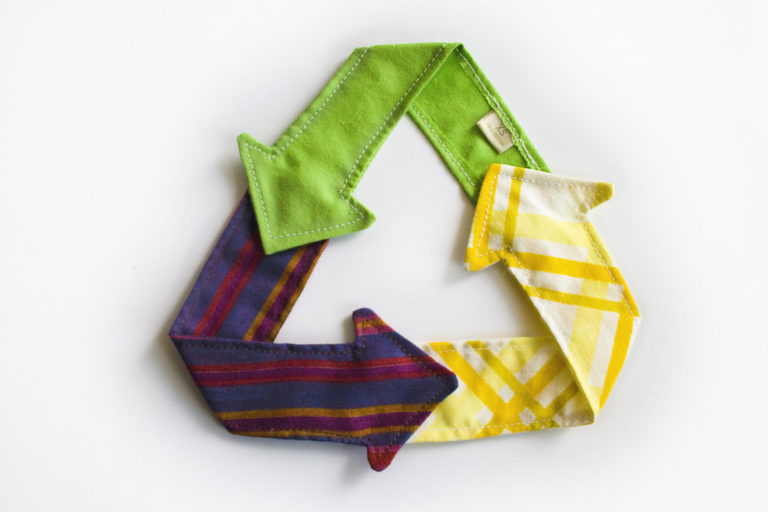How to develop a Sustainable Fashion Business
The world is steadily moving towards sustainability. In fact, sustainability is well-poised to be the new normal. Now-a-days, veganism is a growing trend, battery driven vehicles are talk of the town and ethical fashion is a buzz word. High-end fashion labels are all of a sudden trying to reestablish themselves as ‘organic’, ‘green’, ‘cruelty-free’, ‘eco-conscious’ and ‘honest’. They have realized strong need to change their business models to succeed in the new paradigm. However, the path towards sustainability is not easy. The key question that haunts everyone is: What fashion brands need to do in order to evolve them as a sustainable brand?
Today’s discerning young consumers are much more aware and concerned about the environment as compared to their previous generations. They have refined tastes and preferences and are willing to spend more on quality products. They are not just fashion conscious but are also intrigued in knowing more about what goes behind creating a particular product. They want to know: Who makes their clothes? What are the materials used? How the materials have been sourced? Are fair trade practices implemented to create the product? What dyes are used and what is the social and environmental impact of the clothes produced? According to Sustainable Fashion Blueprint Report, 2018, sustainability is considered as one of the key factors while purchasing fashion products by the consumers. This clearly reflects the increasing awareness among consumers about sustainability as well as growing concern for sustainability in consumer decision making process. This poses great challenge for the companies to redefine their long-term strategies to fulfill consumers’ call for ultra-transparency and sustainability in the way they operate.
Here are the three most important things that are necessary to develop a sustainable fashion business:
Entrepreneur mindset
Even though creation of sustainable brand has lot to do with resources, but it is more important to have a mindset or willingness that goes a long way in creating such brands. Entrepreneurs’ beliefs are vital while framing an organization’s strategy and are manifested in their priorities, resulting in organizational process and outcomes. The perfect example of this fact is Stella McCartney, who is a role model for sustainable fashion. In one of her interviews, she stated “We really don’t have long now, to change things. But I honestly believe it’s doable – I couldn’t do what I do if I didn’t believe that”. Her eco-friendly ethos has led to disruption in the fashion industry. She has partnered with suppliers to introduce innovative textiles, from leather alternatives to recycled marine plastic and yeast-based silk. Recently, she has made the world’s first fully recyclable hoodie for her Adidas collection through collaborating with textile innovative company Evrnu. They used 60% NuCyclfibre, a material made using the threads from old garments and 40% organic cotton that has been diverted from landfills.
Remember: In order to implement sustainable fashion principles, the most important point is the strong urge to create an ethical product. Unquestionably, entrepreneur need to make long-term commitment and allocate dedicated budget. Use of technology like block chain; networking and partnerships with other actors; certification like Fairtrade, GOTS, etc. and learning by example from early adopters will act as key enablers in the process.
Organizational values
By having intensive knowledge about the value chain and the key influences at each phase, an organization can begin to start its sourcing, design, production and distribution in a more ethical way by considering its impact on people and planet. An environment of transparency can be developed across the value chain. For instance, global luxury group Kering, which owns brands including Gucci, BottegaVeneta, Saint Laurent, Alexander McQueen, to name a few, aims to develop 100% transparent and responsible supply chain by 2025. In 2013, the group developed Material Innovation Lab (MIL) dedicated to ethical material.Through collaboration with start-ups and academia, the group has developed new sourcing solutions and innovative raw materials.
Remember: Sustainable initiatives should be fostered both internally and externally. Internally, fair trade practices (e.g. fair wages, proper working environment, etc.) should be followed and employees should be incentivized to encourage the adoption of sustainable practices throughout the supply chain. Externally, partnerships and collaborations with innovative start-ups should be promoted that will help an organization in reaching their sustainable goals.
Education
Sustainability efforts are not gaining strong traction among end-users owing to several factors such as lack of awareness and knowledge as well as lack of visibility and availability of sustainable products. Premium prices and limited styles also deter consumers who make an effort to try sustainable products. Brands need to patiently and diligently educate consumers about why their products are priced more, why they should care about the materials used and its environmental and ethical impact. Consumers should be motivated to buy less and learn to choose quality over quantity. Social media and other tools can be used to promote awareness about sustainability among vendors, consumers, etc. Also, there is a strong need to educate fashion entrepreneurs about strategies to implement sustainable supply chain practices.For example, Kering provides training to new-age designers. The group has partnered with universities across the globe to design sustainability curriculums.
Remember:Education can play a key role in bringing change in the attitude of future designers, employees and customers. It can help enlighten the issues of social and environmental sustainability and encourage them to adopt green practices.
Businesses that can address these challenges can surely leap ahead in the sustainable fashion goods industry. They need to redesign their traditional business models to create a sustainable fashion business.There is great opportunity for businesses to move towards a more conscious
approach to fashion and help drive a shift to a more circular, sustainable industry.
